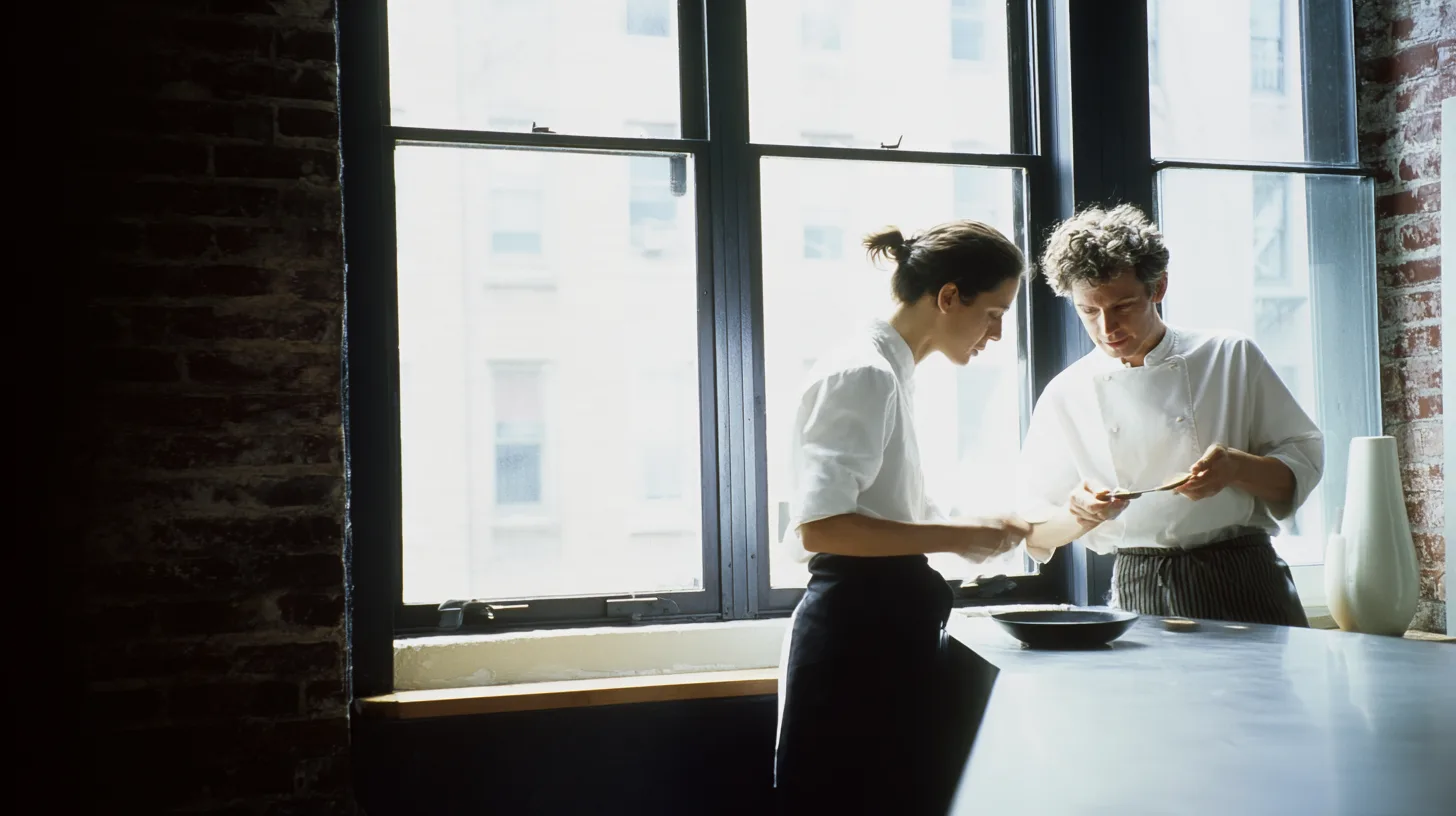The most significant leaps in my career didn’t come from taking classes. They came from watching masters of craft work and paying attention.
Learning to see
My Foundations of Design professor, Eli, took out an exacto knife and proceeded to modify the poster I’d worked on all night. He cut away a corner here. Shifted an element there. Added tension by creating imbalance, then resolved it with a counterweight I hadn’t seen. “Watch the eye,” he said, tracing an invisible path across the composition. “You’re forcing it here. Let it discover this instead.”
I learned more in those five minutes than in weeks of theory.
Learning to think
Zak, a Principal Engineer at Adobe, had this habit. Whenever someone said “MVP,” he’d pause mid-conversation. “Okay. What’s the long-term vision?” Then: “What’s most valuable for the user versus most convenient for us to ship?”
At first, it felt like he was slowing us down. But I started to realize he was preventing us from building the wrong thing quickly. He’d sketch the full vision on the whiteboard, then work backward. It changed how I thought about iteration. Not as compromise, but as deliberate sequencing toward something meaningful.
Joe, Senior Director of Product, taught me a different kind of thinking. We’d spend hours using competing apps, not just looking at screenshots, but actually using them. Signing up, going through onboarding, trying to accomplish real tasks. He’d narrate as he worked: “See how this pattern breaks down here? That’s an opportunity. But this interaction… this is elegantly solved. We should steal that and make it better.”
Product design isn’t invention from scratch, he showed me. It’s continuous improvement and strategic innovation, knowing what to borrow and what to reimagine.
Making thinking visible
After two decades, the shift isn’t about having all the answers, it’s about making your process visible so others can learn from it.
At Adobe, I led two junior designers through their first usability studies. We’d sit together in research sessions, and afterward I’d walk through what I was listening for, how to separate signal from noise. The field work itself was the teaching, they learned by being there, watching how I structured questions and probed for deeper insights.
At Automattic, we document everything in P2s. Every design decision gets written up with context, alternatives considered, and rationale. It’s not formal mentorship, but it serves the same purpose, making your thinking visible. When I explain why we’re solving this user problem first, or how giving AI proper context prevents wasted user effort, designers across the org can learn from the reasoning, not just see the final design.
Leading design for the Agencies platform means constantly articulating the “why” behind decisions. In P2s, in Slack discussions, in design reviews. Not because I have all the answers, but because the thinking process itself is valuable for others to witness.
It wasn’t traditional teaching
In each of these moments, both as learner and teacher, growth happened through proximity to craft, not formal curriculum.
Sometimes these people were levels above me. Sometimes they were colleagues. Sometimes, especially now, I’m the one being observed. The level doesn’t matter as much as the opportunity to witness how someone skilled approaches problems, and the courage to make your own thinking visible for others.
The formula
So professional growth has a formula: Get close to someone skilled. Watch them work. Reflect on what you saw.1 Apply it. Repeat.
And then share what you’ve learned. After 20 years, I’m simultaneously student and teacher. Still seeking out people whose craft I admire. Still paying attention to how experienced designers, PMs, and engineers solve problems I haven’t seen before. But also recognizing that other designers might be watching how I handle a difficult stakeholder conversation or restructure a messy information architecture.
The shift from learning to leading isn’t about knowing everything. It’s about making your thinking visible, both your expertise and your uncertainty, so others can learn from watching you figure things out.
It’s partially in your control. You can seek out these opportunities rather than wait for them. And you can create them for others by working visibly, thinking out loud, and being generous with your process.
- An important note on reflection: It doesn’t have to happen alone. Over the years, I’ve found that structured reflection, whether with a coach, therapist, or trusted colleague, accelerates growth significantly. A good conversation partner helps you see patterns you’d miss on your own, connects disparate experiences, and challenges assumptions you didn’t know you were making. I still work with a coach for exactly this reason. Some of my biggest insights about past experiences came from talking them through with someone who could ask the right questions. Your growth will be faster and more durable if you practice reflection both independently and in conversation. ↩︎
- Cover Image created with Midjourney. Prompt: Chef and sous cheff reviewing a new avant garde minimal dish in a modern brooklyn exposed brick kitchen with lots of bright window light., long shot, three-quarter shot, eye-level, natural light, Kodak Portra 800 –ar 16:9 –raw –sref 2269787902 –sw 50 –stylize 0
